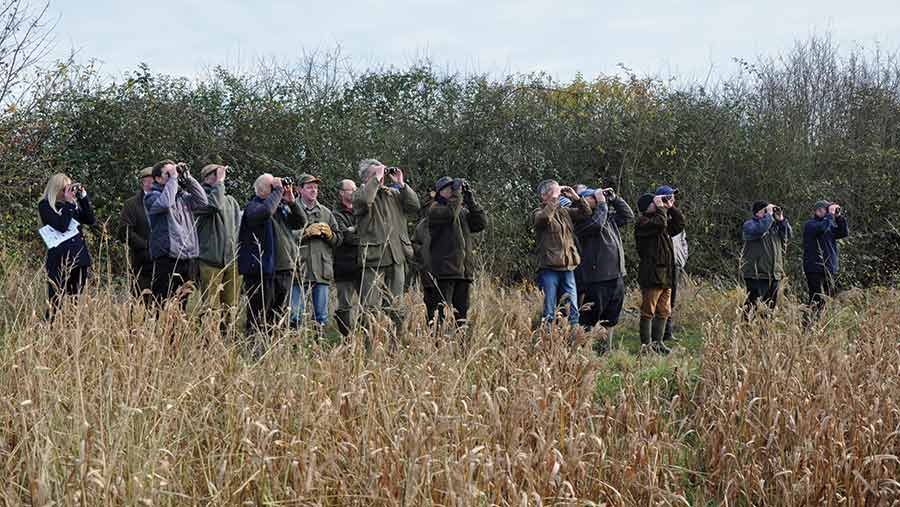Farmers gear up for third Big Farmland Bird Count

More than 1,000 farmers are expected to sign up for the third Big Farmland Bird Count (BFBC) – due to take place from 6-14 February 2016.
Organised by the Game & Wildlife Conservation Trust (GWCT), the annual event encourages growers and livestock producers to record farmland bird species and numbers on their land. The event was launched on Friday, 18 December.
See also: Big Farmland Bird Count Results 2015
Findings will be used to highlight the benefits on farmland bird numbers of agri-environment schemes and voluntary conservation measures, such as supplementary feeding or growing wild bird seed crops and game cover crops.
Launching this now annual event, Jim Egan, from the GWCT’s Allerton Project, said: “More people than ever took part in last year’s count. The more people who count the better idea we have as to how our farmland birds are faring – so I urge farmers to get out and count.”
Mr Egan added: “Once again we are asking farmers, landowners, birdwatchers and gamekeepers to spend 30 minutes recording the species and number of birds seen on one particular area of the farm this coming winter.”
Almost 1000 farmers took part in the 2015 bird count – counting birds across nearly a million farmed acres. Some 127 different species were identified, including those of conservation concern such as starlings, lapwings and tree sparrows.
For those interested in taking part in the 2016 Big Farmland Bird Count, a simple recording sheet can be downloaded from the GWCT website to record sightings. Participants will then be able to fill in their results on a dedicated web page.
Special bird identification days will be held over the next two months for farmers unsure how to tell one species from another. In total, 18 more farmland bird identification training days are being organised for January and February 2016 at locations across the UK.
Each session is run by an expert and will last for approximately two and half hours. At the end of the training participants should be able to recognise the top 24 bird species likely to be seen on farmland this coming winter.
Mr Egan said: “It is now time to do it all again and this time we’re offering more help on how to identify those tricky ‘little brown jobs’ – including a downloadable identification guide to take out into the field.”
Research carried out over the past 23 years at the GWCT Allerton Project in Leicestershire showed that environmental measures could boost farmland bird species, said Mr Egan. Often simple, practical measures could result in a big increase in numbers.
Those who take part and submit fully completed results from the bird count have the chance to win a pair of SLC 8×42 binoculars worth more than £1,300 and donated by Swarovski Optic. For details, visit www.gwct.org.uk/BFBC or call 01425 651000.
Farmland bird facts 2015
- The five most abundant birds seen were wood pigeon, starling, rook, fieldfare, and chaffinch.
- Starlings and fieldfare were seen on over 40% of the farms taking part and were the most abundant red list species recorded in the survey.
- Over 69% of participants are in some form of agri-environment scheme.
- Ten species were recorded for the first time in 2015 – including cirl bunting, cetti’s warbler, whooper swan and lesser spotted woodpecker
- Farmers from every county in England took part. So did farmers from Ireland, Scotland and Wales. Norfolk had the most participants (64), closely followed by Yorkshire (62).
